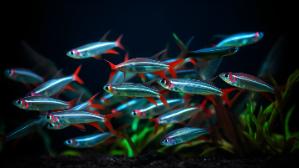
Understanding Fish Hovering Behavior and Its Energy Costs
Recent research conducted by a team including experts from Aberystwyth University has unveiled surprising details about the energy expenditure of fish maintaining their position in water. Contrary to prior assumptions, fish that hover or stay still in water consume considerably more energy than previously thought. This insight has significant implications for ecological studies and the development of underwater robots, bridging biology and engineering.
The Importance of Hovering in Fish Behavior and Survival
Hovering is a vital behavior for many aquatic species. It enables fish to stay vigilant for predators, hunt efficiently, and access hard-to-reach resources like aquatic plants or prey trapped within crevices. To remain stationary, fish employ a combination of fin movements and body adjustments, often referred to as “hovering.” While it appears effortless to an observer, maintaining this position is energetically expensive due to inherent instabilities caused by the fish’s anatomy.
The Role of the Swimbladder and Instability
Most bony fish possess a swimbladder—a gas-filled sac that provides buoyancy. Despite its essential function, the swimbladder introduces instability because of its position relative to the fish’s center of mass. This separation causes a natural tipping tendency, making the fish inherently unstable when trying to hover. As a result, fish need continuous fin movements to stabilize themselves, which in turn requires metabolic energy.
Key Findings from the Fish Energy Research
The research involved placing 13 species of bony fish in specialized tanks outfitted with high-speed cameras and oxygen sensors. By tracking fin movements and measuring oxygen consumption, researchers determined that hovering consumes roughly twice the energy compared to resting at the bottom of the tank. Additionally, a model was developed to analyze how the fish’s body shape and size influence their energy efficiency during hovering.
Body Morphology and Hovering Efficiency
The study revealed that fish with compact, deep bodies—such as goldfish—are more energy-efficient in their hovering behavior. In contrast, slender, elongated species like rummy-nose tetra require more effort to maintain stability. This variation is linked to how the body shape affects the fish’s ability to counteract instability caused by the swimbladder.
Implications for Ecology and Robotics
This research enhances our understanding of fish ecology, particularly their energy budgets and behavioral strategies. Knowing the energetic costs of hovering can inform models of fish behavior, predator-prey interactions, and habitat use. Furthermore, these findings have promising applications in the field of underwater robotics.
Designing More Stable and Maneuverable Undersea Robots
The study’s insights can be translated into the development of miniature aquatic robots that mimic fish movement. Traditionally, underwater robots are designed for stability, often sacrificing maneuverability. However, by intentionally incorporating principles of instability akin to fish hovering, engineers can create robots capable of accessing tight or complex environments. This advancement opens possibilities for underwater exploration, environmental monitoring, and resource management.
Future Directions in Fish Energy and Robotics Research
Aberystwyth University’s contribution to this interdisciplinary research underscores the importance of integrating biological understanding with engineering innovation. Further studies may explore how different species adapt their body shapes for energy-efficient hovering and how these principles can be refined for robotic applications. Additionally, such research can aid in ecological conservation efforts by providing more accurate models of fish behavior and energy expenditure in changing environments.
Explore Opportunities in Aquatic Science at Aberystwyth University
If you are interested in diving deeper into marine biology, ecological modeling, or robotic engineering, Aberystwyth University offers comprehensive programs and research opportunities. Engaging with cutting-edge research like this not only advances scientific knowledge but also prepares you to contribute to innovative solutions in aquatic sciences.
Learn more about Aberystwyth University’s programs and research initiatives in aquatic sciences and robotics by visiting our Research Department.
Take the Next Step in Your Academic Journey
Interested in exploring how biological research can influence technological advancements? Submit your application today or schedule a consultation with our admissions team to discover your future at Aberystwyth University.
If you’re passionate about environmental science, marine biology, or robotics, consider joining our vibrant academic community and contributing to pioneering research that bridges nature and technology.
Have questions or want to learn more? Reach out to our admissions advisors or contact us via our Contact Page.

